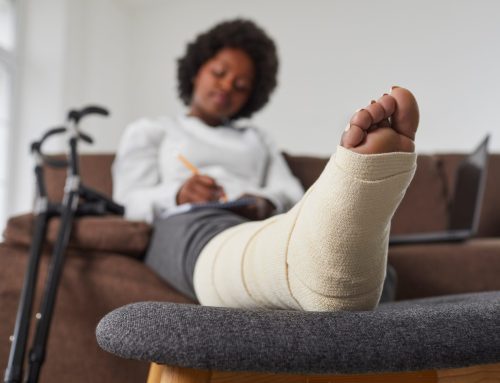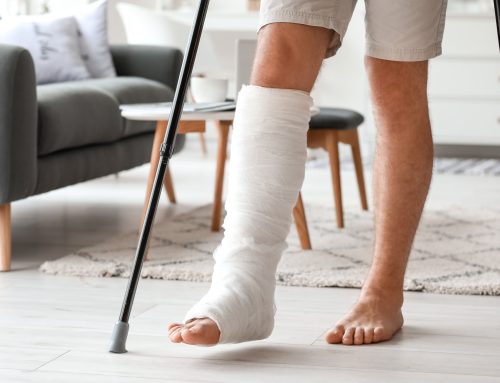Living with arthritis, a chronic disease characterized by inflammation in one or more joints, can present many challenges, one of which includes maintaining optimal bone health. However, it’s crucial to remember that these hurdles can be overcome with the right strategies, support, and determination.

Understanding Arthritis and Its Impact
Arthritis encompasses over 100 different conditions, all marked by inflammation, pain, and stiffness in the joints. The severity and range of these symptoms vary, but they can interfere with daily activities, affecting the overall quality of life. Two of the most common types are rheumatoid arthritis (an autoimmune disease) and osteoarthritis (caused by wear and tear over time).
Arthritis not only impacts joint health but also bone health. Reduced mobility due to arthritis pain can lead to decreased bone strength and density, as regular weight-bearing activity is crucial for maintaining bone health.
The Power of Physical Activity in Arthritis Management
Contrary to some misconceptions, physical activity is not detrimental to individuals with arthritis; rather, it plays a vital role in managing the condition. Here's why:
Enhancing Joint Flexibility and Mobility
Consistent physical activity helps maintain and even enhance joint flexibility, which is crucial for those with arthritis, where stiffness and reduced range of motion are common issues.
Strengthening Supporting Muscles
Regular exercise strengthens the muscles supporting your joints, reducing the strain on them. This strength training can alleviate some arthritis symptoms, making daily tasks more manageable and less painful.
Promoting Bone Health
Regular weight-bearing exercise is essential for stimulating bone-forming cells, and maintaining or even enhancing bone density and overall health.
Improving Overall Well-being
Physical activity is also associated with a range of other health benefits, from cardiovascular health, mental health, weight management, and even improved sleep quality, all of which contribute to better control of arthritis symptoms.
Developing an Arthritis-friendly Exercise Routine
Incorporating physical activity into your life when dealing with arthritis can be challenging, but it's far from impossible. Here are some strategies:
Balanced Approach
A balanced exercise program should include a mix of strength training, flexibility exercises, and low-impact aerobic activities. The diversity can ensure all aspects of physical fitness are addressed without causing excessive strain on the joints.
Pacing
Listening to your body is vital. While regular activity is essential, overexertion can exacerbate arthritis symptoms. Respect your body's signals, and remember to incorporate rest days into your routine.
Expert Guidance
Consulting a physical therapist or a trainer knowledgeable about arthritis can provide invaluable insights. They can develop a personalized exercise regimen catering to your needs and teach you correct movement forms to avoid undue stress on your joints.
Warming Up and Cooling Down
A proper warm-up prepares your joints and muscles for activity, while cooling down helps your body to recover, minimizing post-exercise discomfort.
Beyond Activity: Additional Strategies for Bone Health
While staying active is critical, other aspects also contribute to maintaining bone health when living with arthritis:
Balanced Nutrition
A well-rounded diet rich in calcium, vitamin D, and other bone-supporting nutrients is foundational to bone health. Incorporating foods like dairy products, green leafy vegetables, fish, and fortified cereals can provide these necessary nutrients.
Supplements
Your healthcare provider may recommend supplements depending on your dietary intake and specific needs. These could include calcium, vitamin D, or other bone health supplements.
Regular Health Checks
Regular medical check-ups, including bone density tests, are vital for monitoring your bone health and arthritis condition. These check-ups can provide early detection of any potential issues and allow for prompt intervention.
Medication
Several medications can help manage arthritis symptoms and protect bone health. Always consult with your healthcare provider before starting any new medication.
Arthritis can indeed pose challenges to maintaining an active lifestyle and optimal bone health, but with the right approach, guidance, and mindset, these hurdles can be successfully navigated. The key lies in balancing activity with rest, fortifying your body with nutritious food, monitoring your bone health, and not hesitating to seek medical intervention when needed.
Remember, having arthritis does not mean the end of an active lifestyle or the decline of your bone health. It is merely a part of your journey, a journey you are capable of steering toward strength, resilience, and wellness. As you adopt these strategies and cultivate an active life with arthritis, remember: each step taken, each weight lifted, and every healthy meal consumed is a testament to your strength and resilience.
When it comes to arthritis, you're not just a passenger; you're the driver. So take control, stay active, nourish your body, and let's turn this journey into an empowering voyage towards better bone health and beyond.
When your bone suffers from a fracture, it can be hard to maintain an exercise routine that supports bone strength. With technology like the Melmak LIPUS device, you can get back to everyday living 38% faster. Contact our experts to learn more about accelerated healing.
Have you or anyone you’ve known experienced living with arthritis? Do you have any tips for managing arthritis? Share your story with our readers in the comments below.





